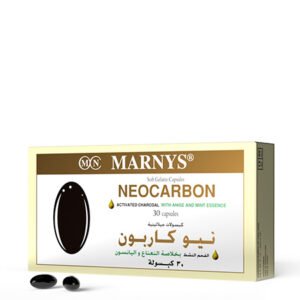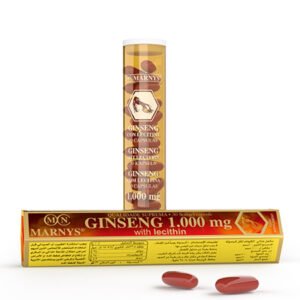What is fluid retention?
Fluid retention, also known in medical terminology as oedema, refers to an increase in the volume of interstitial fluid, i.e. an excessive accumulation of fluid in the tissues, according to the Spanish Heart Foundation.
The circulatory system, kidneys, lymphatic system, and other body systems help keep healthy fluid levels in the body. However, if a problem arises with one or more of these systems, fluid retention can result. It generally affects women more often than men.
What are the main symptoms?
The main symptoms of fluid retention are swelling of the limbs, fatigue and discomfort or unexpected weight gain. These symptoms can be different depending on the natural behaviour of fluids in the body, as well as whether it is a local oedema or regional oedema (limb or whole body). Besides the limbs, mainly the legs, other areas of the body where fluid accumulation is more evident are the lower abdomen, ankles, wrists or eyelids.
Although these discomforts mainly affect older people, they also happen in young people due to an inadequate diet or lack of physical exercise. Other reasons such as being overweight or hormonal changes that happen in women during pregnancy, for example, also cause this accumulation of liquids.
What is the cause of fluid retention?
The body is mostly made up of water. It is found in the blood, muscles, organs and even bones, but sometimes the body exceeds the amount of water needed and retains it. Therefore, fluid retention can be caused by many factors. Hormonal factors, the cardiovascular system, the urinary system, the liver and the kidneys all play a role in fluid elimination. If there is a problem with any of these parts, the body may not be able to flush fluids out as it should.
Thus, lifestyle and diet affect fluid retention. For example, sitting or standing for long periods of time can have an influence on its occurrence.
Common causes
Lifestyle and diet therefore affect fluid retention. For example, sitting or standing for long periods of time can influence its occurrence. The most common causes are the following:
- Circulatory problems, congestive heart failure, kidney or liver disease. It is always important to be checked by a doctor in order to get the right treatment.
- Temperature increase. When there is an increase in temperature, for example during the summer, it is common to feel tired legs.
- Hormonal changes such as pregnancy or ovulation. An increase in hormone levels in women can also cause fluid retention in the days prior to menstruation, during pregnancy or due to thyroid problems.
- A diet high in salt. It is important to take care of the amount of salt we usually take in our daily diet, and if necessary, reduce the intake of salt and sodium-rich foods as they are related to fluid retention. Salt can be replaced by other flavour enhancers.
- Low water intake. Staying well hydrated by drinking the recommended minimum amount of mineral water daily is key to help maintain fluid balance.
- Sedentary lifestyle or standing for long hours. Active exercise or sport helps to stimulate the circulation of the body.
Fluid retention in the legs
The legs are one of the parts of the body where fluid retention is most commonly noticed, although it is also common in the hands, abdomen or chest. Swelling in the area, changes in skin colour, tenderness, joint stiffness or an increase in weight may result.
How do you know if you are retaining fluid?
If you have doubts about whether or not fluid is accumulating in a part of your body, there is a very easy and effective way to find out: put your finger on the area of your body for a few seconds. When you remove your finger, see if the skin is marked, if it is, you can say that it is fluid retention.
Fluid retention in pregnancy
Changes and alterations in hormone levels in women often lead to fluid retention. During pregnancy, due to the enlarged uterus, pregnant women often suffer from a feeling of weight, fatigue and swelling of the ankles and legs. It is most common during the third trimester of pregnancy and may also be present for a few weeks after birth.
How to avoid fluid retention?
To help your body work to avoid fluid retention, it is important to take care of your lifestyle. Some factors which we should pay attention to are the following:
- Physical exercise. Doing sport is always a good way to help your health. If you do not do a specific sport, you can start by doing moderate physical exercise daily, such as going out for a walk.
- Hydration and drinking water. Drink at least two litres of water (about 8 glasses) a day to stay well hydrated.
- Eat foods low in salt and rich in potassium. Low-sodium diets can help eliminate fluids. You can also include foods rich in potassium, which helps to balance sodium levels and restore fluid balance. Purifying diets also work on the main symptoms of fluid retention as part of cleansing the body.
What to take for fluid retention?
Some foods are more recommended than others to help your body combat fluid retention. As we have seen, it is important that your diet is balanced, including fruit, vegetables, pulses, meat and fish, and that it is low in sodium and includes foods rich in potassium.
Among fruits, pineapple, grapefruit, watermelon, melon, grapes and peaches are particularly important. Among vegetables, artichoke, asparagus, garlic, onion and celery can help. Infusions are also important, such as horsetail, green tea and fluid concentrates such as fennel, juniper, birch, parsley or olive leaves.





